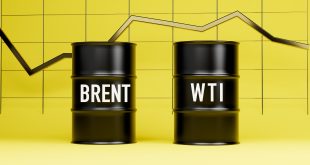Crude prices fell nearly 1% on Tuesday after Russia’s Novorossiysk port resumed loadings, easing immediate supply fears sparked by a Ukrainian drone and missile strike, while markets weighed the longer-term impact of Western sanctions on Russian flows.
- Brent down 0.9% at $63.64/bbl
- WTI down 0.9% at $59.37/bbl
Supply jitters cool as Novorossiysk reopens
Loadings at Novorossiysk restarted Sunday following a two-day suspension that, together with a halt at the nearby Caspian Pipeline Consortium terminal, temporarily disrupted about 2.2 million bpd (≈2% of global supply) and lifted crude more than 2% on Friday.
Sanctions in focus
Attention is shifting to how U.S. sanctions unveiled in October on Rosneft and Lukoil will filter through export volumes and Russian revenues over time. A senior White House official said President Donald Trump is willing to sign Russia sanctions legislation provided he retains implementation authority; Trump also flagged potential measures against countries doing business with Russia and hinted Iran could be included.
Outlook: surplus vs. Russia risk
Goldman Sachs expects oil prices to decline through 2026 amid a sizeable supply wave that keeps balances in surplus. Still, the bank noted Brent could top $70 in 2026/27 if Russian output drops more sharply than anticipated.
Near-term supply relief has checked prices, but the trajectory into 2026 hinges on the tug-of-war between structural surplus and sanction-driven Russian supply risks.
 Noor Trends News, Technical Analysis, Educational Tools and Recommendations
Noor Trends News, Technical Analysis, Educational Tools and Recommendations





